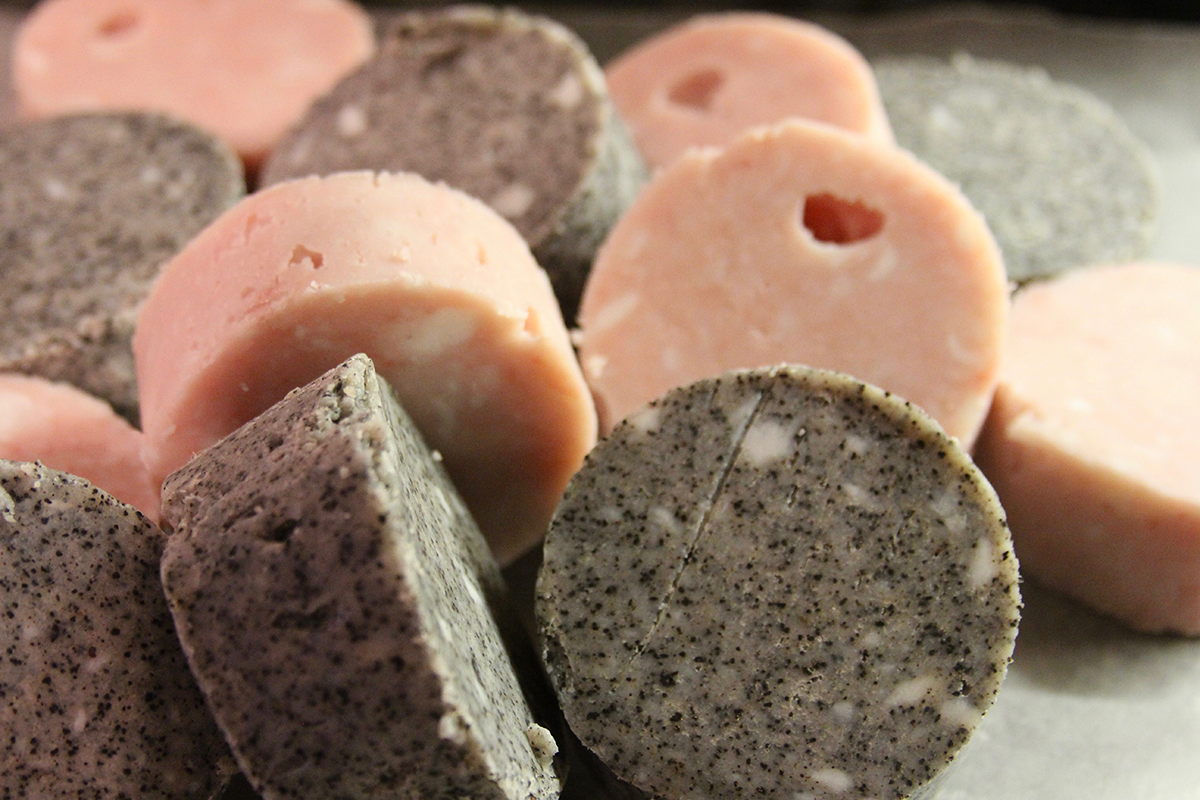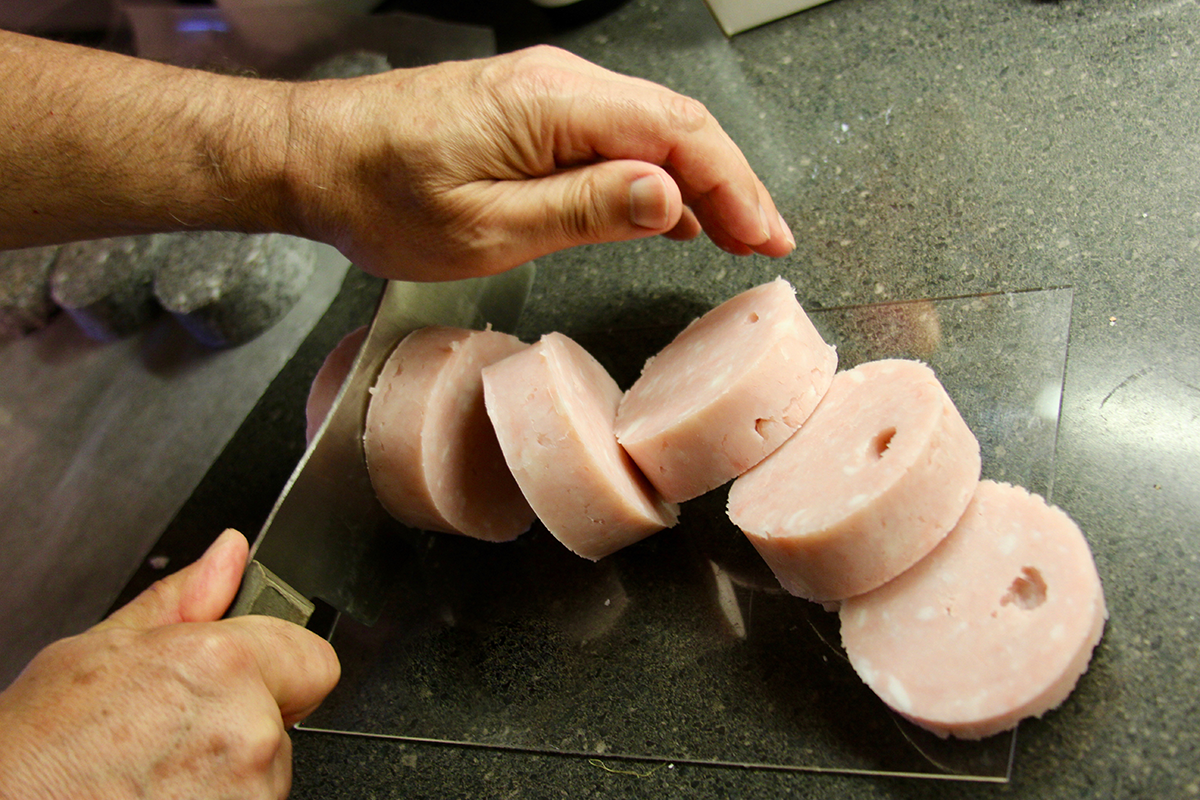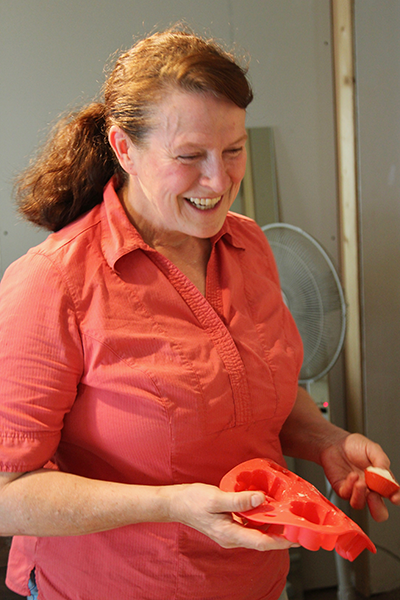
The Curious Trekker
By Peter Johansen
Shower your family and friends with gifts
I wanted to shower my family with gifts. But although I hate shopping, I didn’t work myself into a lather. And that’s no lye, er, lie. You see, I gave one-of-a-kind artisan soap I made myself — admittedly with Rebecca Hanbidge’s help.
Rebecca offers two workshops on soap-making at her farm just west of Richmond. One is for folks who want to learn all they can about soap-making, aiming to make it themselves in future. The other is for dilettantes like me: we simply want a pleasant experience and a few snazzy bars.
Not that I didn’t learn things during the 90-minute session I spent at the farm, accompanied by such critters as Muffin, a friendly Shetland pony, and a ginger tabby named Pumpkin. Rebecca said soap is basically what’s produced when a fat, such as olive or coconut oil, meets an alkaline solution, such as lye. Bring them together in the right proportions and they’ll turn into soap through an interaction called saponification. Add a pleasant scent, a colouring agent and an exfoliant and you’ve got soap good enough to use.
I also learned there are two ways of creating it. With a cold process, the chemistry occurs naturally over a week or two; by contrast, a hot process brings ingredients to a slow boil (Rebecca uses an old Crockpot) and the soap is cured in a day. “The hot process cooks all the lye out of it,” she explained. “After an hour, it’s safe to handle.”

When I arrived, she already had a porridge-like batch on the boil. She’d chosen coconut oil after she learned I have a titch of psoriasis. “It will produce about 20 per cent super-fat, the soap-maker’s term for the oil that’s not needed for the chemical reaction,” she explained. “It’s good for the skin. It adds bubbles when you wash and is very high cleansing.”
She then brought out a dazzling array of vials and walked me through all the possibilities for personalizing my project. Colour could come from a wide range of ground mica oxides, for example, while long-lasting essential oils, such as feminine orange or manly bay rum, would add fragrance. An exfoliant might be oatmeal or poppy seed. “It depends on what people like,” Rebecca said. “Soap making is like baking cookies. There are a hundred million recipes.”
Rebecca put my mind at ease when I dithered over my choices: “It normally takes people 20 minutes just to choose the scent they want.” In the end, I compromised and made two different soaps. One, called Monkey Farts, is designed for kids — aha, five-year-old granddaughter Simone — and carries fragrances of strawberry and banana. I coloured it pink. The other: a coffee-scented essential oil, with spent coffee grounds and poppy seed as added colour and exfoliants.

Once choices were made, Rebecca scooped half of the “porridge” into an ordinary plastic mixing bowl, and handed me a spatula, warning me the goop was at least 160°F. I mixed the added ingredients thoroughly — though some blotches of white remained —and then plopped the batch into a high-tech container I’d been advised to bring — an empty Pringles potato chips canister.(For soaps she makes herself, Rebecca uses silicone cupcake molds from the supermarket.) With each scoopful, I banged the container on the table to force out air bubbles.
As I prepared the second batch, Rebecca, who’s a geomatics expert with the Canadian Forces, told me she got into soapmaking a decade ago. “Sensitivities run in my family, and I started getting rashes from using strong detergent soaps in the military. But my sisters are far worse and can’t wear any fragrances at all.” So, she took a course during a visit to San Diego, and began producing soap for her siblings and herself. Workshops followed as folks learned of her expertise.
Once I’d finished, Rebecca told me to let the soap harden for24 hours — “if you’re impatient, you can stick it in the fridge” —and then peel off the cardboard container and slice it as thick as I wanted. I chose to make the pieces a generous inch thick and wound up with six bars of each recipe. They looked artisan, alright, with ragged edges and a few air bubbles here and there, but the gifts were certainly one of a kind.
This was one soap opera that ended happily.






